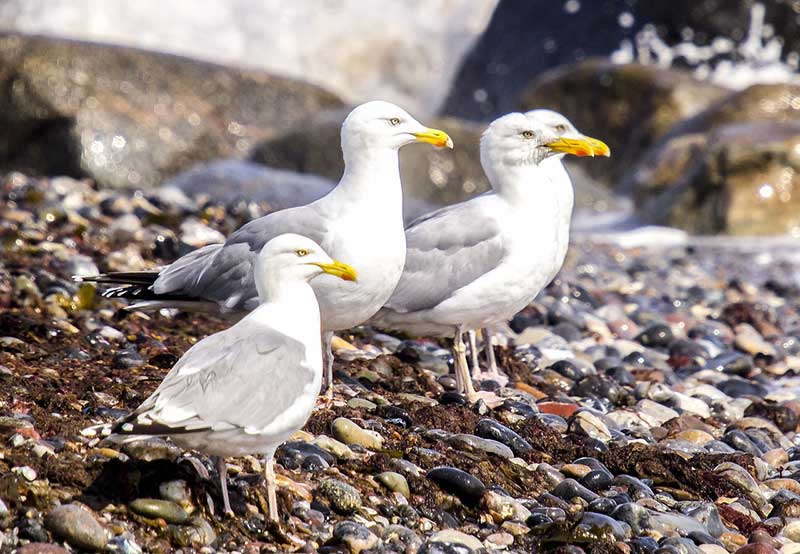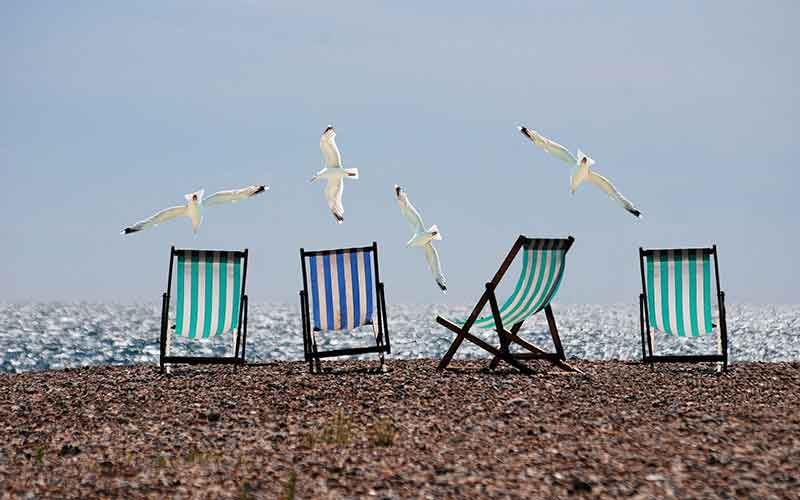Main Menu

Have you ever talked about the seagulls that have visited your garden or seen at the beach only for someone to tell you that it’s wrong to say ‘seagull’ and you should call them gulls? If so, you’re not alone. We often get asked why ‘seagull’ is considered the incorrect terminology.
The word seagull is a colloquialism for describing a bird that belongs to the family Laridae, which also includes the terns and skimmers. There are over 50 species of gull worldwide with 11 found in the UK. These are the black-headed gull, common gull, glaucous gull, great black-backed gull, herring gull, Iceland gull, kittiwake, lesser black-backed gull, little gull, Mediterranean gull, and yellow-legged gull.
Although gulls can often be seen as pests, sometimes given the very unflattering moniker, shitehawks, they are actually rather remarkable birds. They can fly hundreds of miles out to sea in search of food reaching speeds of 45 km/h without increasing their metabolic rate more than 15%. In 2019, a lesser black-backed gull was recorded as flying 520 miles from the Channel Islands to Spain in just 7 days.
They can drink salty ocean water due to a special pair of glands above their eyes that flush the salt away through openings in their bill. This means they can spend several days at sea foraging for food, without needing to return to land in search of fresh water. Other species of birds that are able to filter salt water in this way include puffins, penguins, grebes, and sea ducks.
Gulls have evolved to survive in all kinds of environments, and they are equally adept at swimming, walking, and flying, compared to most other seabirds. They need very little space to take off and can hover motionless in the air, having mastered control of wind and thermals. They have excellent vision and are one of the few birds that can move their eyes in the socket.
Despite their reputation as greedy birds that will eat anything, gulls are actually a bit more discerning than that. One study found that glaucous-winged gulls would avoid paralytic shellfish poisoning by regurgitating contaminated clams before they had a chance to digest them and would avoid eating that species of clam again.
They are highly adaptable feeders and will eat fish and marine and freshwater invertebrates, as well as terrestrial food such as insects, worms, rodents, eggs, carrion, reptiles, amphibians, offal, vegetation, and human refuse.
Gulls show a great versatility in how they take prey, and no gull species is a single prey specialist. They are highly adaptable feeders and will eat fish and marine and freshwater invertebrates, as well as terrestrial food such as insects, worms, rodents, eggs, carrion, reptiles, amphibians, offal, vegetation, and human refuse. They can take prey from the air, water, or land, and some species can hawk insects on the wing.
Research from the BTO found that black-headed gulls that live in urban areas have more of a preference for human ‘fast food’ such as bread and chips, than more natural food sources such as sprats, when compared to gulls that live in less urban habitats, thus proving how well gulls are able to adapt to their surrounding environments. Unfortunately, this may be having a detrimental effect on the birds as the food they are eating doesn’t contain the essential nutrients needed for the birds to remain healthy.

Gulls are intelligent birds and can learn, remember, and pass on behaviours. Rain-dancing to entice worms to the surface of the ground is just one such example; they will also drop hard-shelled molluscs on to rocks to get at the prey inside, learning as they increase the height of the drop to ensure the shell breaks. They will follow ploughs in field in search of the insects that are dislodged from the turned soil and will signal to other gulls that sources of food such as a school of fish are available by flashing their wings at each other.
Scientists from the University of Bristol found that gulls in Bath in Somerset had worked out the times of school breaks so they knew when to turn up for scraps. They also discovered that the birds knew when drinkers left pubs in the evening and waited for them to drop food from their takeaways on the way home.
Their ability to make themselves at home in any environment where there is food available means that more and more of them are living inland rather than near the coast. So why do we still call them seagulls?
Old habits die hard and gulls are still very much associated with the sea, probably due to the abundance of food, in particular fish, that is found at the coast. They can also be difficult to tell apart to the untrained eye so although there is no single species of gull called a seagull, it can be easier to lump all gulls together and give them the generic name, seagulls, including those that are rarely seen at the beach such as the black-headed gull.
The gulls you see at the beach are most likely to be herring gulls, which are large, noisy birds with a reputation for stealing chips and ice creams. However, with a shortage of food near the coast due to over-fishing and climate change, even herring gulls have moved inland and can be found around rubbish tips, and large reservoirs and lakes.
4 Responses
Let them call them seagulls. It makes it easier to spot the idiots.
What about e – gulls (eagles) . They have nothing to do with e’s . Let’s just call them gulls too.
And bee – gulls (beagles). They have nothing to do with bees!
And bay gulls (bagels)
And sing gulls (singles)
Should it even be lee gull (legal )?
Would you even want to ming gull (mingle) with those guys?
What is their ang gull (angle) anyway?
jun gull jungle
bun gull bungle
etc
Seagulls Are Very Funny Animals
I love sea gulls